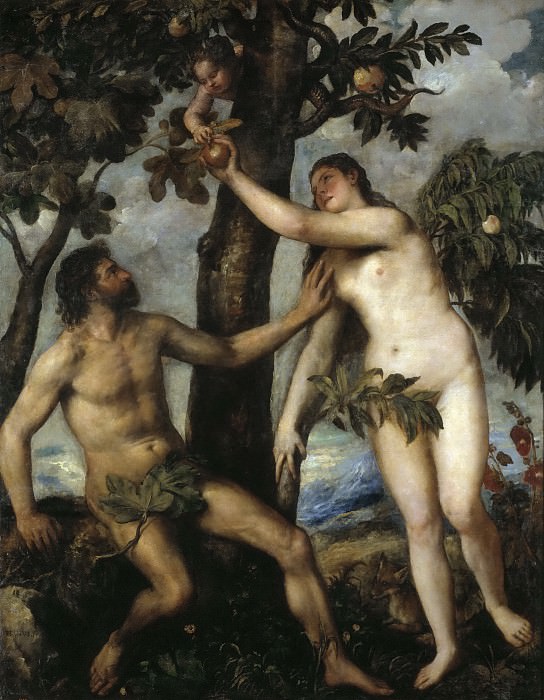Tiziano, Vecellio di Gregorio – Adán y Eva Part 1 Prado museum
Part 1 Prado museum – Tiziano, Vecellio di Gregorio -- Adán y Eva
Edit attribution
Download full size: 2291×2950 px (2,8 Mb)
Back to album: Part 1 Prado museum
The works of the Italian painter Titiano Vechellio were already compared to the greatest painters of the time in his early period. His biblical and mythological paintings made an indelible impression. Among his customers were the most different strata of society, he wrote for the common people, as well as for the princes, the Dukes, he ordered a picture, even the Pope. Each of his work was imbued with a special energy, it seemed that the captured episode here - now come to life. These works include a painting of "Adam and Eve" ("The Fall"), written around 1550 years.
Description of Titian’s painting Adam and Eve
The works of the Italian painter Titiano Vechellio were already compared to the greatest painters of the time in his early period. His biblical and mythological paintings made an indelible impression. Among his customers were the most different strata of society, he wrote for the common people, as well as for the princes, the Dukes, he ordered a picture, even the Pope. Each of his work was imbued with a special energy, it seemed that the captured episode here - now come to life.
These works include a painting of "Adam and Eve" ("The Fall"), written around 1550 years. The plot of the painting is familiar to all - the story of the Bible, which tells of the sin committed by the first people, thanks to the curiosity of women. Eve was beckoned by the forbidden fruit - the apple of paradise. This tree serves as an indicator of good and evil, the heroes themselves, without relying on God, were given the choice - to know its fruit, or still moderate their curiosity. The latter wins, as Titian reflected in his work.
Eve reaches for the apple, almost plucking it, and Adam hesitantly, but still trying to warn her, extending his hand to Eve’s shoulder - as if to ask her to stop before it is too late. But there is another figure in the tree - an angel, or perhaps a demon, who has taken the guise of an innocent child. Behind the main action we see a fox, which the master has placed behind the culprit with some background. Eve was pushed to sin by her conversations with the serpent, aka the devil, who can take different forms. On the canvas, he appears as a fox, whose burning eyes betray his triumph.
Кому понравилось
Пожалуйста, подождите
На эту операцию может потребоваться несколько секунд.
Информация появится в новом окне,
если открытие новых окон не запрещено в настройках вашего браузера.
You need to login
Для работы с коллекциями – пожалуйста, войдите в аккаунт (open in new window).




















You cannot comment Why?